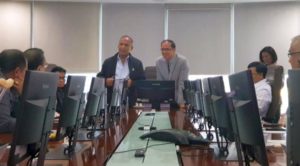Cebu Pacific Air, the country’s biggest budget carrier, is looking to China to fuel future growth.
The airline is taking delivery of 10 more planes next year, which will mainly be deployed across international markets including second-tier Chinese cities, Cebu Pacific CEO Lance Gokongwei said yesterday.
“There is a lot of interest from North Asia, the Chinese especially, to connect to the Philippines,” Gokongwei told reporters on the sidelines of the launch of its sustainable tourism initiative dubbed Juan Effect.
Chinese visitors to the country surged as the Duterte administration pursued friendlier ties with China. According to the Department of Tourism, the Philippines saw over half a million Chinese visitors from January to May this year. The figure was up by over 40 percent from year-ago level.
“We think there are going to be large opportunities to connect the secondary cities in China,” Gokongwei said, citing locations such as Chengdu and Xi’an.
Cebu Pacific, which has a fleet of 67 aircraft, is expecting the delivery of over 40 new planes through 2022, most of which are Airbus A321neos. Gokongwei noted that many of these would be deployed in areas outside Manila’s Ninoy Aquino International Airport, which was suffering from congestion.
He said other gateways included Clark International Airport in Pampanga, Mactan Cebu International Airport and the New Bohol International Airport in Panglao, which would open next month.
Gokongwei said Cebu Pacific was still in talks with the Civil Aeronautics Board regarding its petition to revive the fuel surcharge, given the steep increase in the price of oil.
The surcharge, which is passed on to flyers, allows airlines to offset part of their fuel costs, a major operating expense.
“The increase in fuel prices has been significant,” Gokongwei said. The impact, he said, amounted to an additional P500 million in fuel costs a month.
The International Air Transport Association said the price of jet fuel saw a slight decline to $89.9 per barrel as of July 27 this year compared to $90.2 at the start of the month. The figure was still up 40 percent over the same period in 2017.


